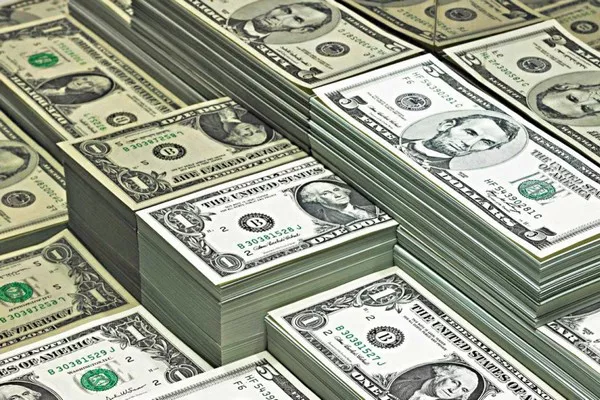The U.S. dollar dipped to a three-month low against peer currencies on Tuesday, following a slip overnight triggered by weaker-than-expected new home sales data. Traders are now positioning themselves for a potential Federal Reserve interest rate cut in the first half of the upcoming year.
Newly released data revealed a 5.6% drop in U.S. new home sales for October, reaching a seasonally adjusted annual rate of 679,000 units—below the 723,000 units anticipated by economists surveyed by Reuters. This data prompted a decline in Treasury yields.
The dollar index, gauging the greenback against a basket of currencies, stood at 103.16, hovering near its lowest point since August 31. November is tracking to be the dollar’s weakest month in a year, with a loss exceeding 3%.
Market sentiment suggests that the Federal Reserve’s interest rate increase cycle has likely concluded, adding downward pressure to the U.S. dollar. According to the CME FedWatch tool, U.S. rate futures indicate a roughly 25% probability of rate cuts commencing in March, rising to nearly 45% by May.
Kyle Rodda, senior financial market analyst at Capital.com, noted, “Slowing growth momentum, peak rates, rate cuts next year, and unwinding of long positioning: it’s the dynamic feeding a weaker U.S. dollar and driving the entire currency complex.” He believes the dollar has more room to decline, although any significant shift in this trend would require a high threshold.
Traders are closely monitoring the U.S. core personal consumption expenditures (PCE) price index this week, seeking further confirmation of slowing inflation in the world’s largest economy. Additionally, key economic events include Chinese purchasing managers’ index (PMI) data and an OPEC+ decision on deepening oil production cuts, expected to be discussed on Thursday after a delayed policy meeting.
In currency markets, the Australian dollar briefly touched a near four-month high of $0.6632 against the greenback before easing to $0.6621, while the kiwi momentarily reached its highest point since August 10 at $0.6114 before settling at $0.61015. The yen regained ground on Tuesday amid continued dollar weakening, with the dollar/yen pair inching down around 0.3% to 148.21 yen per greenback. However, potential turbulence awaits the Japanese currency pending the outcome of U.S. inflation data later this week.
Matt Simpson, senior market analyst at City Index, cautioned, “The risk for dollar bears is that U.S. PCE inflation does not come in as soft as hoped, leaving (dollar/yen) vulnerable to a bounce this week.”


